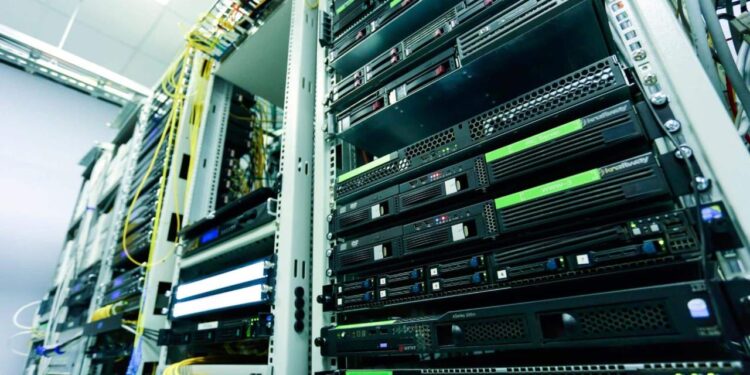The operating system (OS) is the fundamental software that manages all the hardware and software resources on a server. It is the core of your digital infrastructure, dictating performance, security, and the types of applications you can run. Choosing the right server OS is a critical decision that can profoundly impact the long-term success and sustainability of your project, whether it’s a small personal website, a large e-commerce platform, or a complex enterprise application. The landscape of server operating systems is more diverse and dynamic than ever, with new distributions, cloud-native solutions, and security enhancements emerging constantly.
This comprehensive guide delves into the intricate world of server operating systems, providing a detailed analysis of the most popular choices available in 2025. We will move beyond a simple feature list, exploring the core philosophies, ideal use cases, and key considerations for each OS. Our goal is to equip you with the knowledge to make an informed, strategic decision that aligns with your specific technical requirements, budget, and expertise. We’ll examine the titans of the industry—Linux, Windows Server, and others—weighing their pros and cons to help you navigate this crucial choice.
The Key Selection Criteria

Before we dive into the specific operating systems, it is essential to understand the key criteria that should guide your selection process. A one-size-fits-all approach is a recipe for disaster. Your perfect server OS depends on what you need to achieve.
A. Cost and Licensing: The financial model is a major factor. Some operating systems are completely free and open-source, while others require expensive licenses. The cost can also extend to commercial support and additional software.
B. Security and Reliability: The server is often the most critical component of a digital presence. The OS must be inherently secure and have a track record of reliability. You need to consider how quickly vulnerabilities are patched and the availability of robust security features.
C. Performance and Scalability: The OS must be able to handle your application’s workload efficiently. This includes optimizing for CPU, memory, and disk I/O. It should also be able to scale seamlessly as your needs grow, supporting everything from single servers to large clusters.
D. Ease of Use and Management: This is crucial, especially for individuals and small teams. An intuitive interface and a clear management paradigm can save countless hours. This includes installation, configuration, updates, and troubleshooting.
E. Hardware and Software Compatibility: The OS must support your server hardware. Additionally, the software and applications you plan to run must be compatible with your chosen OS. This is particularly important for proprietary or niche software.
F. Community and Commercial Support: When things go wrong, you need a place to turn for help. Open-source OSes often have vibrant communities, while commercial OSes offer professional, paid support.
Linux
Linux is, without a doubt, the most popular and dominant server operating system on the planet. Its open-source nature, flexibility, and unparalleled stability have made it the go-to choice for everything from small web servers to the largest supercomputers and cloud platforms. Linux isn’t a single OS but rather a family of distributions, each with its own philosophy and target audience.
The Big Players in the Linux Ecosystem
A. Ubuntu Server: Ubuntu Server is a cornerstone of the modern server landscape. It is known for its ease of use, excellent documentation, and strong community support. It strikes a perfect balance between being enterprise-ready and accessible to beginners. Ubuntu’s Long-Term Support (LTS) releases, with five years of security and maintenance updates, make it an incredibly reliable choice for production environments. Its tight integration with cloud platforms and a vast software repository make it a versatile option for web servers, databases, and containerized applications.
B. Red Hat Enterprise Linux (RHEL): RHEL is the undisputed heavyweight champion of the enterprise world. Backed by Red Hat (now a part of IBM), RHEL is known for its rock-solid stability, meticulous security, and professional commercial support. RHEL is the preferred choice for mission-critical applications in finance, government, and other industries where stability and compliance are non-negotiable. Its robust subscription model provides access to a powerful set of tools, certifications, and expert support, making it an invaluable asset for large organizations.
C. CentOS Stream: CentOS Stream is the upstream development platform for RHEL. It provides a rolling, continuous delivery model, acting as a bridge between the community-driven Fedora and the enterprise-grade RHEL. It is an excellent choice for developers and system administrators who want to stay close to the latest features and innovations that will eventually land in RHEL, without the RHEL subscription cost. While not as stable as RHEL for production, its role as a testing ground for future enterprise features makes it incredibly valuable.
D. Debian: Debian is the granddaddy of many Linux distributions, including Ubuntu. It is renowned for its commitment to free and open-source software, stability, and a massive repository of over 60,000 software packages. Debian’s philosophy of thorough testing and quality control results in a highly stable OS, making it a favorite for those who prioritize reliability and want complete control over their system.
E. Rocky Linux and AlmaLinux: Following the change in the CentOS development model, Rocky Linux and AlmaLinux emerged as new community-driven, enterprise-grade alternatives. They are 1-to-1 binary compatible with RHEL, offering a free and stable option for businesses that want a long-term, production-ready OS without the cost of a RHEL subscription. They have quickly gained traction and are seen as the spiritual successors to the old CentOS.
Advantages of Linux
A. Cost: Most Linux distributions are free to download and use. This makes them incredibly cost-effective, eliminating the upfront expense of licensing fees and allowing you to allocate your budget to hardware or other critical software.
B. Flexibility and Customization: Linux is highly customizable. You can choose from a variety of desktop environments (or none at all for a headless server), a wide array of file systems, and a massive selection of software. This flexibility allows you to build a system tailored to your exact needs.
C. Security: Linux has a strong reputation for security. Its open-source nature allows for constant peer review, and vulnerabilities are often patched very quickly. The built-in security tools, like SELinux and AppArmor, provide granular control over system access.
D. Performance: Linux is incredibly lightweight and efficient. It can run on minimal hardware, making it perfect for embedded systems and low-power servers. Its command-line interface (CLI) is highly efficient for remote management, reducing overhead.
E. Community Support: The Linux community is vast and supportive. There are countless forums, wikis, and online resources available to help you troubleshoot problems and learn new skills.
Disadvantages of Linux
A. Learning Curve: While some distributions are easier to use, Linux can have a steep learning curve for those unfamiliar with the command line. Managing a server often requires a solid understanding of shell scripting and system administration.
B. Software Compatibility: While most major applications are supported, some proprietary software, especially from specific industries, may not be available for Linux or may require a complex setup to run.
C. Lack of Professional Support: For free distributions, you rely on community support. While it is often excellent, it may not be fast enough for a mission-critical production environment. Commercial support is available for distributions like RHEL, but it comes with a cost.
Windows Server

Windows Server is the commercial server operating system developed by Microsoft. It is a powerful, integrated platform that is the foundation for countless businesses, especially those heavily invested in the Microsoft ecosystem. Windows Server is known for its user-friendly graphical interface (GUI), strong integration with other Microsoft products, and robust commercial support.
Key Features and Versions
A. Active Directory: Active Directory (AD) is a cornerstone of Windows Server. It provides a centralized service for managing users, computers, and other resources on a network. It is an essential component for large organizations that need centralized control and security policies.
B. Hyper-V: Microsoft’s own virtualization platform, Hyper-V, is built directly into Windows Server. It allows you to create and manage virtual machines, providing a powerful and cost-effective way to consolidate workloads and maximize hardware utilization.
C. GUI and PowerShell: Windows Server offers both a familiar graphical user interface and a powerful command-line scripting tool, PowerShell. The GUI makes it easy for newcomers to get started, while PowerShell allows for advanced automation and remote management.
D. Security Enhancements: Modern versions of Windows Server, such as Windows Server 2022, include advanced security features like Hardware-enforced stack protection and Secured-core server, which protect against increasingly sophisticated cyber threats.
Advantages of Windows Server
A. Ease of Use: The graphical user interface (GUI) makes Windows Server accessible to users with a background in desktop computing. This can reduce the learning curve and the need for specialized IT staff.
B. Strong Ecosystem Integration: For businesses that use other Microsoft products like Office 365, SharePoint, or SQL Server, Windows Server offers seamless integration. This can simplify management and deployment.
C. Commercial Support: Microsoft provides professional, 24/7 support for its products. This is a major selling point for businesses that require guaranteed uptime and rapid issue resolution.
D. Software Compatibility: Many proprietary and enterprise-grade applications, particularly in the business and finance sectors, are developed specifically for the Windows platform.
Disadvantages of Windows Server
A. Cost: The licensing fees for Windows Server can be substantial, especially for a large number of servers or a small business with a limited budget. The cost of CALs (Client Access Licenses) can also add up quickly.
B. Performance Overhead: The GUI and its underlying services can add performance overhead, making Windows Server less lightweight than a CLI-based Linux distribution. For highly optimized, high-performance applications, this can be a disadvantage.
C. Security Vulnerabilities: Due to its widespread use in corporate environments, Windows Server is a frequent target for cyberattacks. While Microsoft releases regular patches, the sheer volume of vulnerabilities can be a concern for some.
Other Notable Server Operating Systems
Beyond the two giants, there are other operating systems that are well worth considering, each with its own niche.
A. FreeBSD: FreeBSD is a Unix-like OS known for its rock-solid stability and advanced networking features. It is a preferred choice for high-performance servers, such as those that handle high traffic or act as routers and firewalls. Its BSD license is more permissive than the Linux GPL, which is appealing to some developers.
B. Containers (Docker/Kubernetes): While not a full OS, containers and orchestration platforms like Docker and Kubernetes have become the new standard for deploying applications. They abstract the application from the underlying OS, allowing for unparalleled portability and scalability. Many modern server deployments use a lightweight Linux distribution to run a container runtime, which then hosts the applications.
C. Cloud-Specific OSes: Cloud providers often offer their own optimized OSes, such as Amazon Linux 2. These are stripped-down, security-hardened distributions designed to run efficiently within their cloud environment. They are perfect for users who are fully committed to a single cloud provider.
The Great Decision
The right choice comes down to your unique circumstances. Here is a decision matrix to help you navigate your options:
A. If You Are a Small Business or Startup:
- Linux (Ubuntu Server): Best for general-purpose web hosting, blogs, and other public-facing websites. It’s affordable, flexible, and has a wealth of resources available.
- Windows Server: Best if your business relies on Microsoft-specific applications like Exchange, SharePoint, or SQL Server.
B. If You Are a Large Enterprise or Corporation:
- RHEL: The gold standard for mission-critical applications where stability, security, and professional support are non-negotiable. It’s the go-to for finance, healthcare, and government.
- Windows Server: Ideal if your organization is heavily invested in the Microsoft ecosystem and needs seamless integration with Active Directory and other Microsoft products.
C. If You Are a Developer or a Technical User:
- Any Linux Distribution: The preferred choice for developers due to its flexibility, vast ecosystem of developer tools, and compatibility with container technologies.
- Rocky Linux/AlmaLinux: A great choice if you want the stability of an enterprise-grade OS without the cost, perfect for hobby projects and small-scale deployments.
D. If Security and Performance Are Your Top Priority:
- FreeBSD: A strong contender for network appliances, firewalls, and other applications that require maximum stability and advanced networking features.
- Linux (specific distributions): Many Linux distributions can be hardened to meet strict security requirements.
Conclusion
The selection of a server operating system is not merely a technical decision; it is a strategic one that sets the foundation for your entire digital infrastructure. In 2025, the debate is no longer about which OS is inherently “the best” but rather about which OS is the best fit for your specific needs. The open-source Linux ecosystem, with its myriad of distributions, offers unparalleled flexibility, cost-effectiveness, and a vibrant community. It remains the dominant force in the server world, powering everything from personal blogs to the largest data centers. Its lightweight nature and robust security features make it a developer’s paradise and a bastion of reliability for a wide range of applications. The ongoing evolution of distributions like Ubuntu and the rise of enterprise-focused alternatives like Rocky Linux ensure that Linux will continue to be a fertile ground for innovation and a powerful solution for any server need.
Conversely, Windows Server, with its user-friendly interface and deep integration with the Microsoft ecosystem, provides a powerful and familiar environment for businesses. Its robust commercial support, and the fact that many enterprise applications are built specifically for the platform, make it a natural and logical choice for many organizations. It offers a solution that minimizes the learning curve and provides peace of mind through professional support and a unified technology stack. The ongoing investment by Microsoft in security and performance ensures that it will remain a formidable competitor in the enterprise space.
Finally, other players like FreeBSD and the increasing importance of containerization demonstrate that the server OS landscape is richer and more specialized than ever. The modern approach often involves a combination of technologies, where a lightweight Linux distribution runs on a physical server or in the cloud, acting as a host for containerized applications. This hybrid model allows for the best of both worlds: the efficiency and low overhead of a lean OS combined with the portability and scalability of container technology. The right choice is ultimately a reflection of your priorities. By carefully considering factors such as cost, security, ease of use, and compatibility with your planned applications, you can make a decision that will not only power your server today but will also provide a stable and scalable foundation for years to come.








